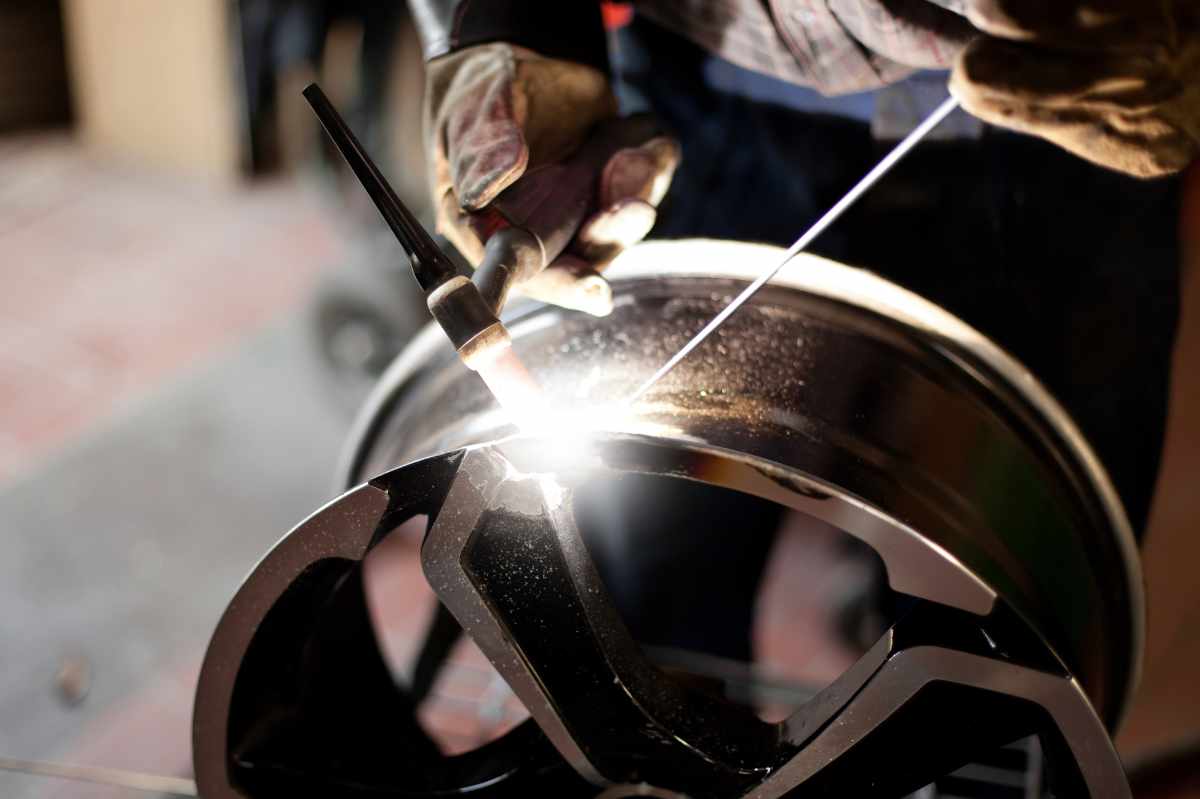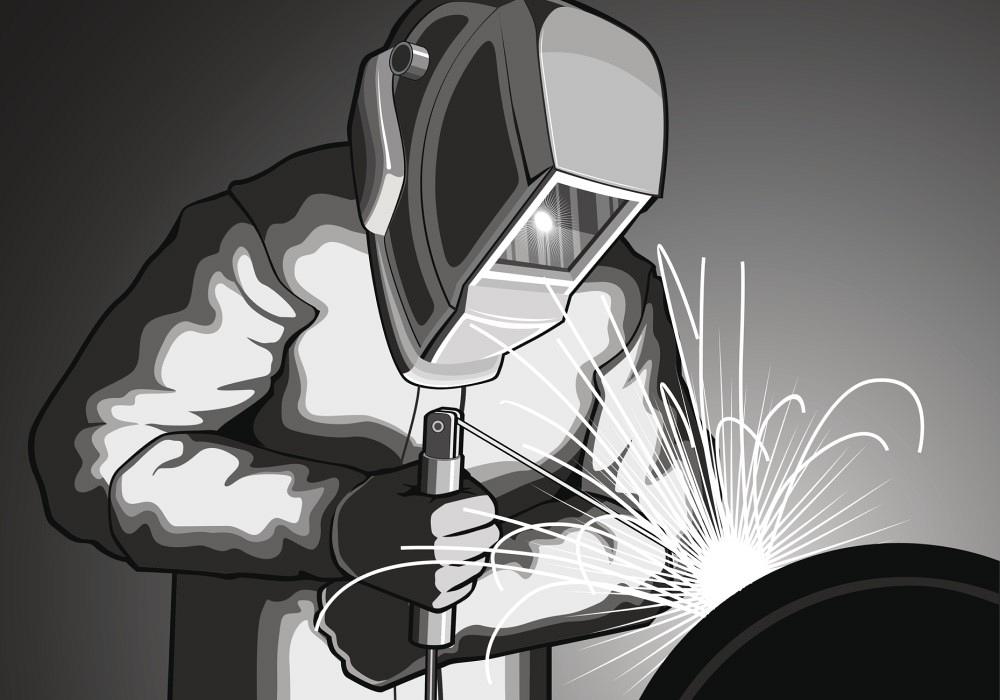All Regarding Welding: Secret Insights Into Techniques and Finest Practices for Success
Welding incorporates a range of strategies, each matched for specific materials and applications. Understanding these methods, such as GMAW, SMAW, and TIG, is necessary for accomplishing optimal results. Additionally, the best devices and security methods can not be ignored. As prep work and repairing play crucial functions in the welding procedure, mastering these aspects can significantly boost the top quality of the final item. What are the essential aspects that guarantee a successful weld?
Understanding Different Welding Strategies
Welding strategies include a variety of approaches, each fit to specific applications and products. Among one of the most usual methods are Gas Metal Arc Welding (GMAW), Protected Steel Arc Welding (SMAW), and Tungsten Inert Gas Welding (TIG) GMAW, likewise recognized as MIG welding, is prominent for its speed and flexibility, making it excellent for slim materials. SMAW, or stick welding, is preferred for its simplicity and performance in outdoor atmospheres, particularly with thicker metals. TIG welding offers precision and control, making it ideal for complex work and non-ferrous metals (Belgrade). Each technique has its one-of-a-kind advantages and factors to consider, enabling welders to choose the very best approach based upon the project's needs, product kind, and desired outcomes. Comprehending these techniques is important for effective welding
Essential Welding Devices and Devices
While various welding strategies need particular skills, the best tools and tools are similarly essential for achieving high quality results. Vital welding tools includes welding makers, which differ depending on the technique-- such as MIG, TIG, or stick welding. Protective gear, consisting of handwear covers, headgears, and aprons, assurances safety and convenience throughout the procedure. In addition, components and clamps assist secure materials in position, ensuring accuracy in welds. Consumables like welding poles, wire, and shielding gas are also important parts that affect the quality of the weld. Tools such as mills and cutters help with surface area prep work and post-weld ending up, contributing to a professional end result. Investing in top quality equipment ultimately enhances the performance and efficiency of welding projects.
Safety Practices in Welding
Proper safety and security methods are important in the welding industry to secure workers from prospective hazards. Welders need to use proper personal safety tools (PPE), consisting of safety helmets with proper shading, handwear covers, and flame-resistant clothes. Adequate air flow is vital to decrease direct exposure to harmful fumes and gases produced throughout the welding procedure. Additionally, workers ought to be learnt the appropriate handling of welding devices to stop mishaps. Fire safety measures, such as maintaining combustible products away from the welding area and having fire extinguishers conveniently available, are required. Normal assessments of tools and offices can help recognize potential dangers before they cause crashes. By sticking to these safety practices, welders can develop a safer working environment and lessen threats related to their trade.
Readying Materials for Welding
Preparing materials for welding is a vital step that considerably affects the high quality and integrity of the end product (Montana Mobile Welding and Repair Belgrade). Proper prep work involves cleansing the surfaces to get rid of impurities such as rust, oil, and dirt, which can compromise the weld. Techniques such as grinding, sanding, or making use of solvents are typically utilized to attain a clean surface area. Additionally, ensuring that the products fit together well is crucial; voids can bring about weak welds. It's additionally important to take into consideration the alignment and positioning of the parts, as this will influence the convenience of welding and the last result. Lastly, picking the ideal filler material and guaranteeing compatibility with the base metals is necessary for accomplishing strong, durable welds
Tips for Achieving High-Quality Welds
Attaining premium welds requires interest to information and adherence to ideal techniques throughout the welding procedure. Proper joint preparation is necessary, making certain surfaces are totally free and clean from pollutants. Selecting the ideal filler material and welding method based on the base steels is essential for ideal bonding. Maintaining consistent travel speed and angle while welding can promote and avoid issues harmony. Additionally, regulating warmth input is essential; extreme warm can bring about bending and damaged joints. Regularly inspecting the welds during the procedure permits instant changes if essential. Using appropriate post-weld therapies, such as cleaning and anxiety relief, can improve the resilience and honesty of the weld, ultimately making certain a successful outcome.
Repairing Usual Welding Issues
Welding frequently presents obstacles that can influence the quality and honesty of the end product. Usual issues such as porosity, inconsistent weld grains, and overheating can emerge, each calling for particular fixing techniques. Understanding these troubles is crucial for welders to enhance their skills and accomplish ideal results.
Porosity Troubles Explained
Porosity can commonly be neglected, it stays a vital problem in welding that can jeopardize the stability of a finished item. Porosity refers to cswip 3.1 the visibility of little gas pockets within the weld grain, which can deteriorate the joint and lead to early failure. This issue commonly occurs from impurities, dampness, or incorrect securing gas protection throughout the welding process. To minimize porosity, welders ought to confirm that the base products are completely dry and tidy, make use of proper shielding gases, and keep regular welding criteria. Routinely evaluating the devices and atmosphere can additionally assist identify prospective problems before they manifest in the weld. Addressing porosity efficiently is essential for accomplishing strong, durable welds that fulfill top quality requirements.

Inconsistent Weld Beads
Inconsistent weld beads can greatly influence the quality and stamina of a completed product. Numerous elements add to this problem, consisting of inappropriate travel rate, wrong amperage setups, and irregular electrode angles. When the welder relocates too quickly, a bead might show up narrow and do not have infiltration, while relocating too slowly can create too much build-up. In addition, using the wrong amperage can cause either undercutting or too much spatter, both of which concession weld stability. The welder's technique, such as inconsistent lantern motion, can additionally lead to irregular bead look. To reduce these issues, welders should concentrate on maintaining steady, controlled movements and making sure appropriate equipment settings to accomplish uniformity in their welds. Consistency is key to achieving solid and dependable welds.
Overheating and Bending Issues
Excessive heat during the welding procedure can result in considerable getting too hot and warping problems, impacting the architectural stability of the workpiece. These problems usually show up as distortion, which can compromise positioning and fit-up, making additional assembly challenging. Aspects adding to overheating include the selection of welding criteria, such as voltage and take a trip rate, along with the kind of product being welded. To alleviate these concerns, welders ought to keep constant travel rate and proper warmth input while monitoring the work surface temperature level. Additionally, pre-heating or post-weld warmth therapy can aid alleviate anxieties brought on by quick air conditioning - Fabrication. Regular inspection and adherence to ideal practices are vital in avoiding getting too hot and making sure the durability and integrity of welded frameworks
Frequently Asked Questions
What Are the Career Opportunities in the Welding Sector?
The welding market supplies diverse profession opportunities, including settings as welders, assessors, educators, and designers. Specialists can operate in production, construction, aerospace, and auto sectors, benefiting from solid demand and affordable wages in various roles.
How Can I Enhance My Welding Speed Without Giving Up Quality?
To boost welding rate without sacrificing quality, one ought to exercise reliable techniques, maintain equipment, maximize settings, and aws d1 1 2020 enhance hand-eye sychronisation. Regular training and seeking comments can additionally greatly add to accomplishing faster, premium welds.
What Accreditations Are Available for Welders?
Many accreditations exist for welders, including those from the American Welding Society (AWS), the National Facility for Building And Construction Education And Learning and Study (NCCER), and various industry-specific organizations. These qualifications boost employability and weblink show skill efficiency.
Just How Does Welding Impact the Qualities of Metals?
Welding affects the residential properties of steels by modifying their microstructure, which can result in changes in hardness, toughness, and ductility. Warm input and air conditioning prices throughout the procedure significantly impact these material qualities.
Can I Bonded Dissimilar Metals With Each Other?

Comments on “How to respond when encountering porosity in Montana Mobile Welding and Repair Welding”